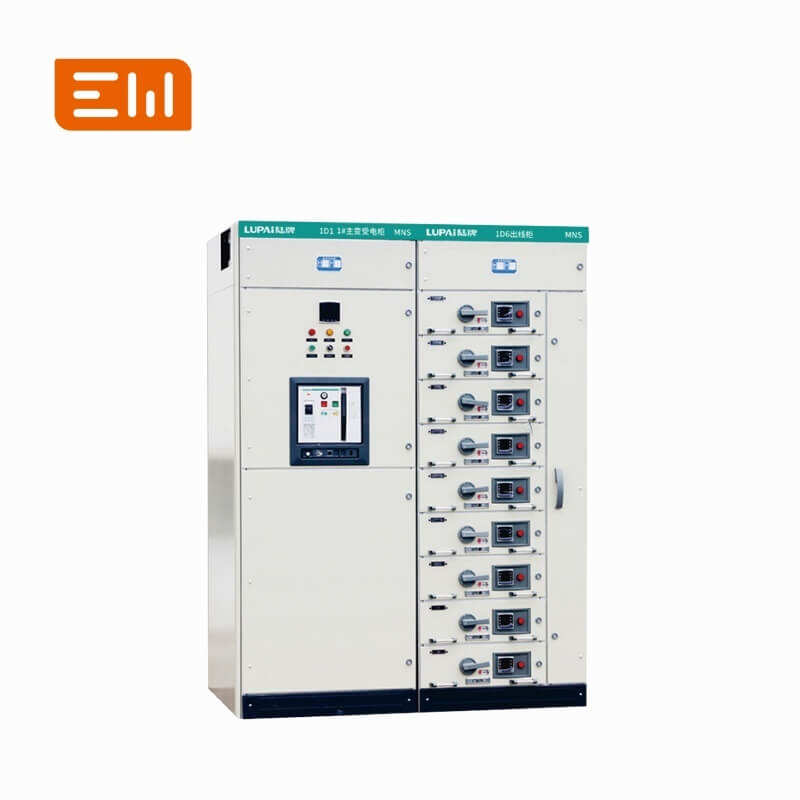LV Switchgear Strategies for Data-Driven Power Distribution
LV switchgear is at the heart of modern power distribution. Data centers, smart factories, and transit hubs rely on low-voltage assemblies to route power safely while collecting actionable insights. Rising electrification and sustainability mandates force designers to reconsider how switchgear is sized, monitored, and maintained.
Quick Definition: LV switchgear refers to factory-assembled low-voltage switchboards containing busbars, protection devices, and control systems that distribute power below 1,000 V AC and coordinate downstream feeders.
Key Project Takeaways
- LV switchgear must satisfy IEC 61439 and IEC 60947 requirements to guarantee safe operation.
- Modular cubicles, intelligent trip units, and condition monitoring deliver scalable, resilient power distribution.
- Enwei Electric provides MNS, GCS, and GGD series LV switchgear paired with transformers and substations.
- Standards from IEC, IEEE, and NFPA underpin procurement checklists for critical infrastructure projects.
Why LV Switchgear Modernization Tops Engineering Agendas
Industrial growth and digital transformation increase electrical load densities. Legacy panels struggle to manage harmonics from variable frequency drives, renewable sources, and UPS systems. Upgrading to LV switchgear with selective coordination and flexible topologies unlocks higher reliability and energy efficiency.
Furthermore, sustainability targets require precise measurement of energy flows. Smart LV switchgear enables granular monitoring that feeds ESG reporting and utility incentive programs. Without the right metering architecture, portfolios cannot benchmark consumption or validate efficiency investments.
Architectural Considerations for High-Performance LV Switchgear
Engineers should design LV switchgear with compartmentalized sections (Form 3b or Form 4b) to isolate maintenance zones. Busbar supports constructed from flame-retardant materials maintain dielectric clearances even during thermal cycling. Main incoming sections benefit from draw-out air circuit breakers (ACBs) featuring communication-enabled protection relays.
Downstream feeders may use withdrawable MCCB units or fixed devices with plug-in connectors for rapid replacement. Specifying copper busbars with silver-plated joints mitigates resistive heating. For harsh environments, surface treatments such as epoxy powder coating guard against corrosion and dust ingress.
Standards and Compliance Framework
Procurement teams must align specifications with credible external references:
- IEC 61439-1/2 — Governs design verification, temperature rise, and dielectric tests for LV switchgear assemblies. Source: International Electrotechnical Commission
- IEC 60947-2 — Details performance requirements for low-voltage circuit breakers, ensuring coordination inside the switchboard. Source: International Electrotechnical Commission
- IEEE 1584-2018 — Provides arc-flash hazard calculation methods vital for personnel safety planning. Source: IEEE
Referencing these standards during tendering ensures compatibility with regional regulations and minimizes inspection delays.
Configuration Comparison Checklist
| Design Attribute | Preferred Specification | Benefit for Operators |
|---|---|---|
| Busbar Arrangement | Horizontal main bars with vertical risers; 30 % spare capacity | Supports future load additions without major downtime. |
| Protection Coordination | ACBs with zone selective interlocking; MCCBs with adjustable trip curves | Limits fault impact to affected feeder, improving uptime. |
| Monitoring Layer | Embedded power meters with Modbus TCP/IP and cloud gateway | Delivers real-time energy insights and predictive alerts. |
| Mechanical Segregation | Form 4b compartments, metal barriers, interlocked doors | Enhances operator safety during inspections. |
| Environmental Protection | IP31 for conditioned rooms; IP54 with filtration for industrial sites | Prevents dust ingress and moisture-related failures. |
Integrating LV Switchgear into Digital Energy Ecosystems
Modern LV switchgear plays a pivotal role in building energy intelligence. Connected devices publish load profiles through open protocols, enabling predictive maintenance and peak demand management. Engineers should mandate open APIs, time-synchronized logs, and compatibility with digital twin platforms to support future data science projects.
Cybersecurity policies must include secure boot firmware, multi-factor authentication for remote access, and regular patch management. Partnering with vendors that provide documented cybersecurity practices streamlines compliance audits.
Deployment Scenarios Across Industries
Data centers: Require redundant LV switchgear for dual-corded architectures, hot-swappable feeders, and branch circuit monitoring to protect mission-critical loads.
Manufacturing plants: Utilize LV switchgear to support heavy motor loads, with additional harmonic filters and heat management to withstand 24/7 production.
Commercial buildings: Deploy modular panels that accommodate tenant fit-outs and electric vehicle charging infrastructure.
Transportation hubs: Need seismic-rated structures, fire-resistant materials, and remote diagnostics for distributed control rooms.
Enwei Electric’s LV Switchgear Portfolio
Enwei Electric offers LV switchgear built in ISO-certified facilities, using automated busbar fabrication and precision assembly. The MNS series delivers fully withdrawable modules for data centers, while the GCS and GGD series provide cost-effective reliability for manufacturing and public infrastructure.
Learn about the range at https://www.enweielectric.com/products/switchgear. Pair LV switchgear with oil-immersed transformers from https://www.enweielectric.com/products/transformers/oil-immersed-transformers or integrate within compact substations outlined at https://www.enweielectric.com/products/substations.
Lifecycle Planning and Maintenance Insights
Predictive maintenance strategies should focus on thermal imaging, partial discharge monitoring, and breaker operation logging. Scheduling torque checks and cleaning during planned shutdowns maintains reliable contact resistance. Digital dashboards supplied by Enwei Electric provide real-time alerts when breaker wear or temperature anomalies occur.
Asset managers should maintain spare drawers, interchangeable protection relays, and documented test reports for compliance audits. Aligning maintenance with IEC 60364 recommendations improves safety outcomes.
Specification Checklist for Project Engineers
- Define maximum demand, diversity factors, and future expansion requirements.
- Run short-circuit studies to validate ACB and MCCB interrupting ratings.
- Detail metering architecture, protocol requirements, and integration with building management systems.
- Confirm enclosure IP rating, form of segregation, and arc-flash mitigation measures.
- Coordinate installation clearances and cable entry routes with mechanical and architectural teams.
Engineering FAQ on LV Switchgear
How does LV switchgear improve power reliability?
It segments distribution networks with coordinated protection, enabling faults to be isolated quickly while healthy feeders continue operating.
Which standards govern LV switchgear design?
IEC 61439 assures assembly safety, IEC 60947 covers individual devices, and IEEE 1584 guides arc-flash calculations for personnel protection.
What advantages does Enwei Electric offer?
Enwei Electric combines modular LV switchgear with compatible transformers and substations, delivering harmonized protection settings and lifecycle support.
Call to Action: Build Intelligent LV Switchgear Systems
Reliable LV switchgear is the backbone of any smart facility. Engage Enwei Electric for engineered assemblies, digital-ready monitoring, and turnkey integration. Contact Enwei Electric to align your specification with proven LV switchgear solutions.
Project Applications
See real-world deployment examples and gallery highlights across Enwei Electric product hubs:
- Transformer solutions for distribution and industrial projects.
- Switchgear portfolios covering medium- and low-voltage control rooms.
- Current transformer ranges supporting precision metering and protection.
- Prefabricated substations that integrate transformers, switchgear, and panels.
Table of Contents
- LV Switchgear Strategies for Data-Driven Power Distribution
- Key Project Takeaways
- Why LV Switchgear Modernization Tops Engineering Agendas
- Architectural Considerations for High-Performance LV Switchgear
- Standards and Compliance Framework
- Configuration Comparison Checklist
- Integrating LV Switchgear into Digital Energy Ecosystems
- Deployment Scenarios Across Industries
- Enwei Electric’s LV Switchgear Portfolio
- Lifecycle Planning and Maintenance Insights
- Specification Checklist for Project Engineers
- Engineering FAQ on LV Switchgear
- Call to Action: Build Intelligent LV Switchgear Systems
- Project Applications


